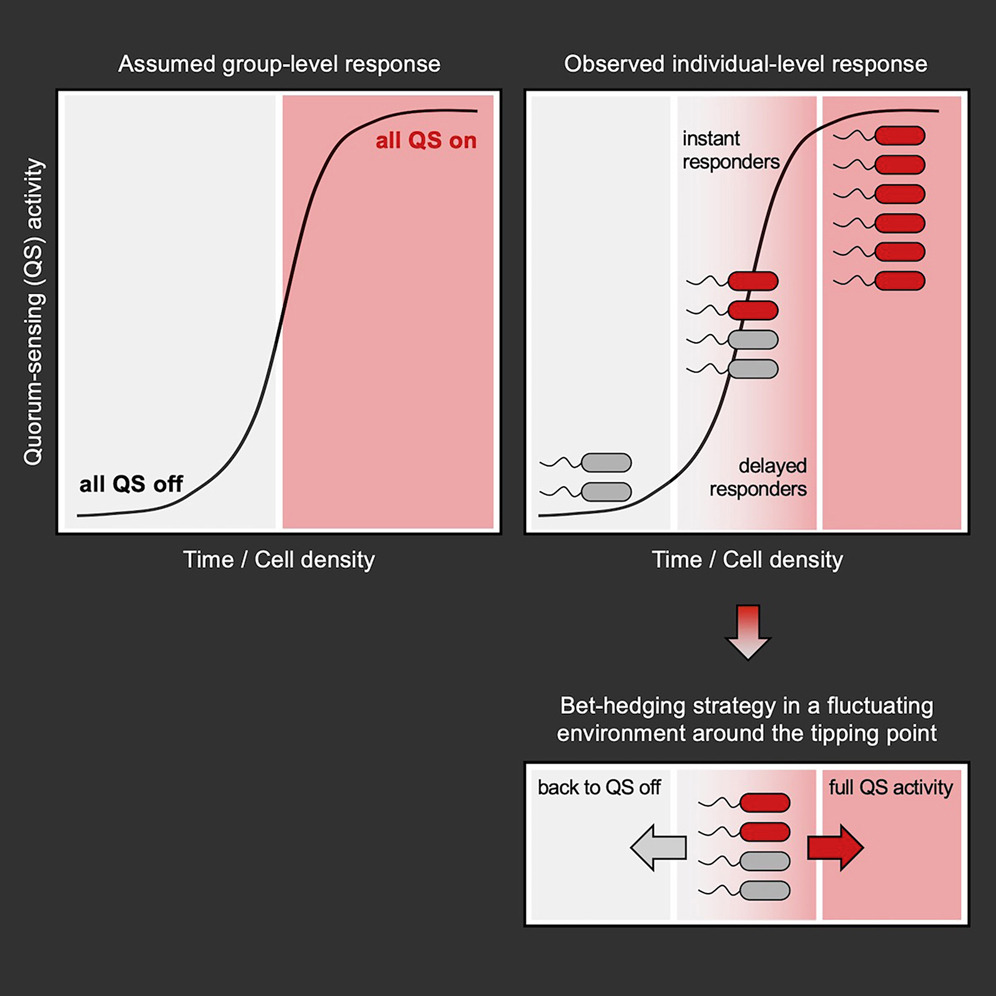The Kümmerli group shows that collective decision-making in P. aeruginosa involves transient segregation of quorum-sensing activities across cells
Collective decision-making in Pseudomonas aeruginosa involves transient segregation of quorum-sensing activities across cells
Bacterial groups can coordinate cooperative actions through a communication process called quorum sensing (QS). However, whether individual bacteria coordinate their QS actions at the single-cell level, or whether group QS phenotypes are the sum of their noisy members, is unknown. Here, the Kümmerli group tracked the temporal commitments of individual Pseudomonas aeruginosa bacteria to the intertwined Las and Rhl-QS systems, from low to high population density. QS gene expression was shown to be noisy, with heterogeneity peaking during the build-up phase of QS. Discrete subgroups of cells formed that transiently segregated into two gene expression states: low Las-receptor expressers and high Las-receptor expressers. Over time, gene expression activities converged with all cells fully committing to QS. Using general mathematical models, the Kümmerli group was able to show that molecular resource limitations during the initiation phase of regulatory cascades can mechanistically trigger gene expression segregation across cells. This mechanism can operate as a built-in brake enabling a temporary bet-hedging strategy in unpredictable environments. Together, this work reveals that studying the behavior of bacterial individuals is key to understanding emergent collective actions at the group level.
See Jayakumar et al., Current Biology
